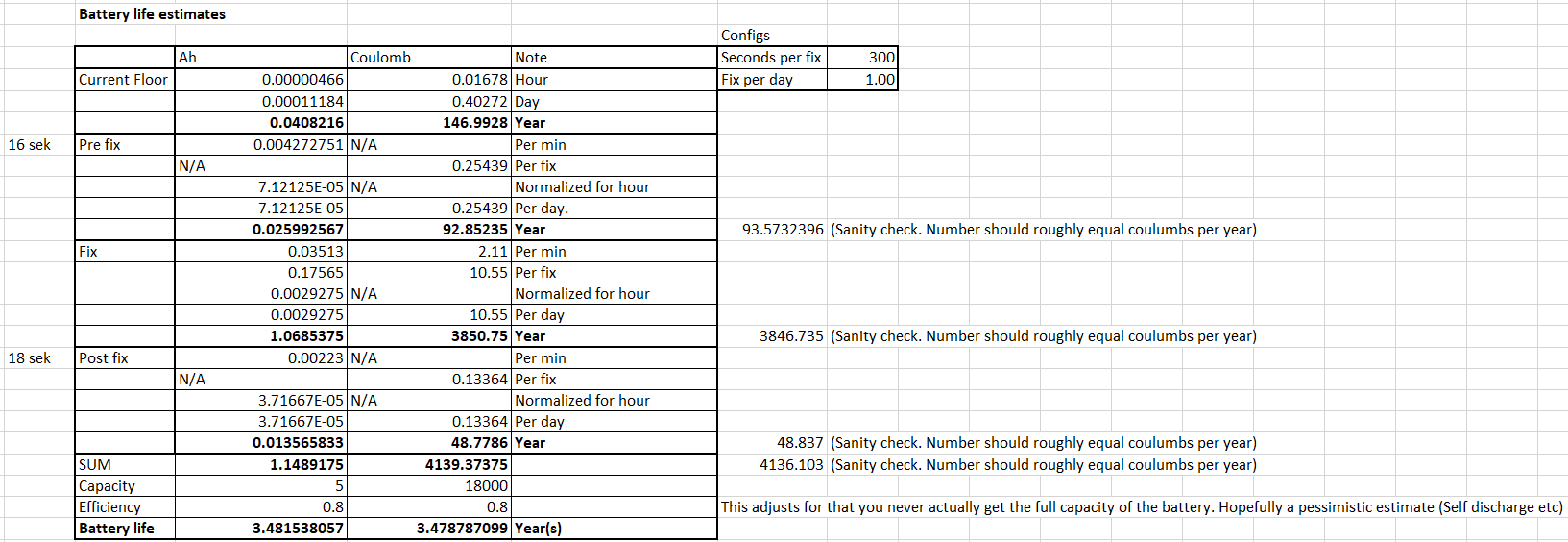Hello everyone,
I'm trying to do some battery calculations for our coming asset tracker based on the nRF9160. I would very much like some discussion on the topic, as a sanity check!
As a background, all the app is doing is waking up, getting a fix, sending it, going to sleep. Once per day.
I've used the Power Profiler kit 2 (PPK2) to measure:
- Current floor (PSM)
- Stuff happening before GPS search
- GPS search
- Stuff happening after GPS fix
I'm trying to make a worst case calculation, using 300 seconds of GPS searching. Connecting to LTE and cloud and getting AGPS before, sending data and disconnecting from cloud after. I'm basing my calculations on a 5000mAH battery, and doing the calculations both in AH and Coulomb.
The calculations now looks like this:
Simplifications: I am allowing overlap with current floor time as I consider it negligible. "Per min-AH" cells are in ampere minutes.
If I assume 30 seconds per fix the device lasts for 21 years. This seems too good to be true, so I think I've missed something.
My main concerns are: Am I way off, or onto something? Is there something I haven't taken into consideration? Are the estimates "valid"? Does anyone have any experience or knowledge to share? Based on this, it seems communication protocols etc. matters very little compared to actually getting the fix faster
Please fire any questions at me, and look at this post with the most critical eyes. It would be a great help.
Thank you all!
Kind regards,
Torje


